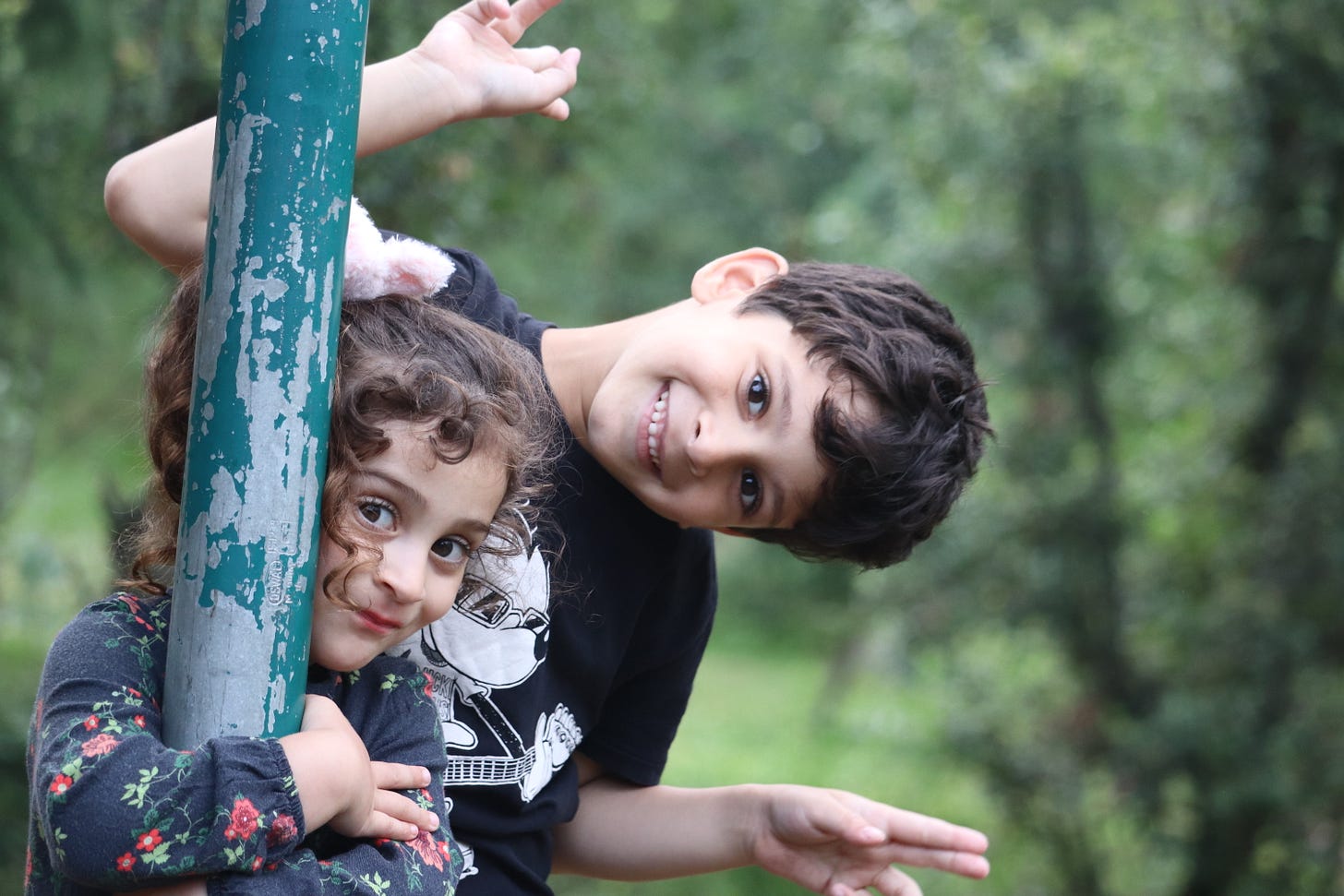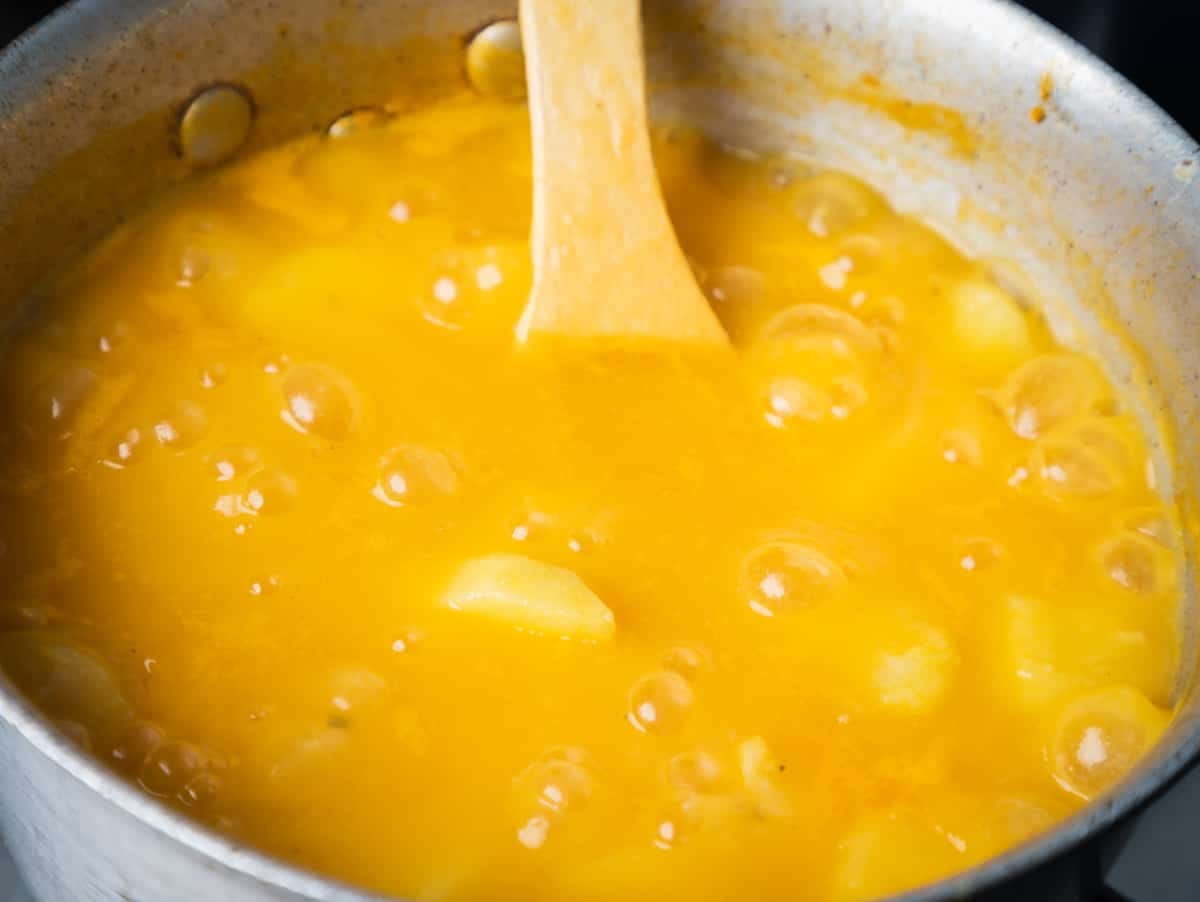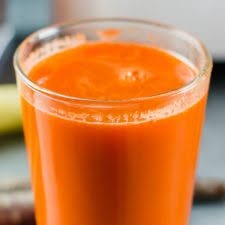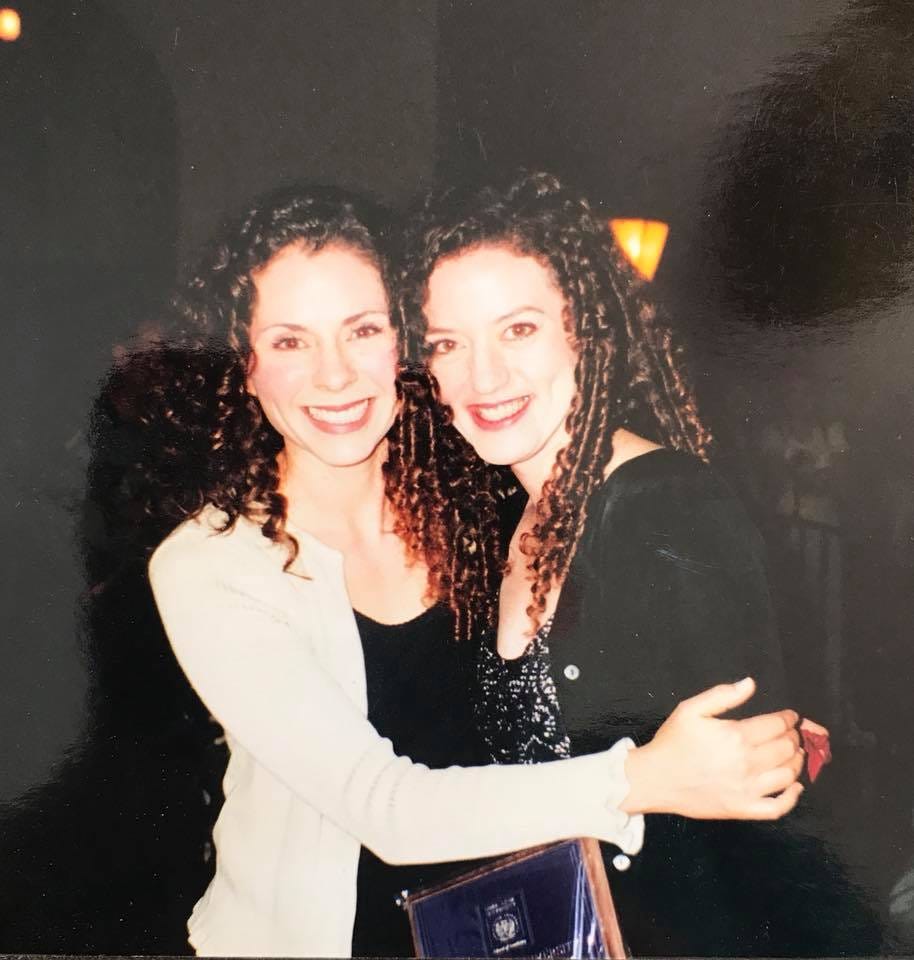
The potato soup topped with avocado slices, an Andean staple, was too-hot for a Spring lunch. “Blow on it,” Mama Tere said. She drew a spoonful close to her own lips and whistled over it, delicately, barely making a ripple. “Like this,” she said, and did it again. I copied her.
My grandmother had cooked locro de papa, the Sunday I’d meet my brother. It was the hottest May in New Jersey in-a-hundred-years, and my five-year-old forehead glowed in the afternoon light coming through the kitchen window as I relished the creamy-soup with gusto, like I did most meals as a child.
My four-year-old sister was more judicious with eating, but she loved this locro, and Mama Tere couldn’t cool it fast enough for her. We we’re excited, my sis and I. Our Mami would finally return from the maternity ward, any second.
My Dad walked through the front door first, no baby in sight. Instead, he held two plush Scottish-Terriers in tartan vests, one under each arm. We ran to him, and squatting to meet my sister and me at eye level, my father said smiling, “You have a ñaño now. And he brought you these!” He handed us our huggable gifts.
What a wonderful little brother, I thought immediately. I was amazed, he brought us gifts.
Then my Mami walked in, holding her tiny precious bundle. My sis and I saw him, pink and asleep. We loved our ñaño, right away.
Ñaña and ñaño are Ecuadorian terms of endearment for siblings.
Even toddlers know these Quechua1 words convey a deep affection. I’ve heard a two year-old boy whisper “ñaña,” holding a tiny sister on the family couch for the first time, followed by his delicate kiss on her forehead. Gently, gently.
Sadly, my own very Americanized siblings and I don’t use ñaña and ñaño for each other anymore. And I don’t think I’ve ever taught them to my own kids. Really, I hadn’t heard either word for over a decade, until a few months ago, when one of my closest Ecuadorian friends said her daughter-in-law had recently given birth in California.
South American baby mamas are customarily pampered back to full-strength by their own mothers, their mother-in-laws, or both in turn for a minimum of forty-days after giving birth. This, so the recovering mom fully heals physically and enjoys their new child in relative peace.
This is why my grandmother had been in New Jersey, not Ecuador, when her daughter gave birth to my baby brother. Mama Tere flew to the United States to care for my sister and I, and my parents as well. Hence her pot of locro de papa big enough for us all. Six weeks later, she headed back to South America, confident her daughter, son-in-law and grandchildren were well and happy.
Near the end of the weeks my lovely Ecuadorian friend spent caring for her daughter-in-law and fam in California (within driving distance from me), I got to meet her grown children. I hadn’t seen my friend since we were teenagers, actually. But Ecuadorians tend to be socially warm, and social media helps us stay connected across decades and time zones. So, after all these years, I met her son (the new dad) and his wife, and her daughter (the new aunt). They chatted with me, and each other like close friends. And as we strolled through Corona del Mar, a beach town bordering the Pacific Ocean, I heard the word ñaña.
“Ñaña,” the new father said to his sister. I don’t remember what he said next because suddenly, I was reminded of all the word means.
Last year, I heard an NPR2 story about sibling relationships that’s stuck with me. In Hispanic families, the reporter said, “helping your little sister or brother isn't this burden or obligation. Rather it's a part of your life that makes you feel good.” 3
Researcher Mariano Rojas4 says Latino parents bring-up children in “relational wealth" intentionally, raising kids surrounded by a psychological warmth that’s mental health protective life-long.
Belinda Campos,5 also a researcher, says Hispanic children are taught to enjoy their siblings because,
When we focus on others, this generates its own momentary joys. But it also deflects from whatever is bringing us down.
None of this was news to me of course. Still, I was flooded with gratitude for my Latin American family. And also for my own kids, who despite everything—living in a society in which sibling relationships are often more toxic than life-affirming, for one, but especially having-had-to-live-through the fallout of their parents’ divorce.
Despite everything, my children (three grown, and two teenagers) generally enjoy hanging-out with each other. I’ve seen their happiness expand, from helping or giving to a sister or brother, plenty of times. They seem to experience sibling-hood as life enriching. Watching their relationships with one-another evolve through the years for the better, certainly adds to my joy.
All this reminds me of my beloved mom. After giving birth to my children (especially the first four kids), she took care of me, and my family, like Mama Tere had cared for her. Like my Ecuadorian friend was caring for her daughter-in-law.
My Mami juiced carrots and oranges every morning for forty days at a time, and insisted the kids and I drink our eight ounces of Vitamins C and A first thing.
She baked Ratatouille, fried eggs in olive oil, cooked locro de papa, and we feasted while she was here. Mami made space for me to physically heal, and gave me time to foster warmth amongst my growing brood. Her work of deep care—was foundational to the long-term psychological strength and happiness of my family.
In my Colonial Latin American history course, I recently introduced Huáscar and Atahualpa, a pair of famous (in South American History) siblings. Some of my students vaguely recalled a detail-or-two about the Inca Empire (from their high school AP World History classes). One actually remembered Atahualpa. “Wasn’t he the last Emperor?” she said. “The one the Spanish conquered?”
“Yep,” I said. “And Atahualpa had a half-brother in Cuzco. Huáscar was his name. Atahualpa was plotting to vanquish him. In fact, Atahualpa and his army were heading to do the deed, when the Spanish Conquistadors first found them.”
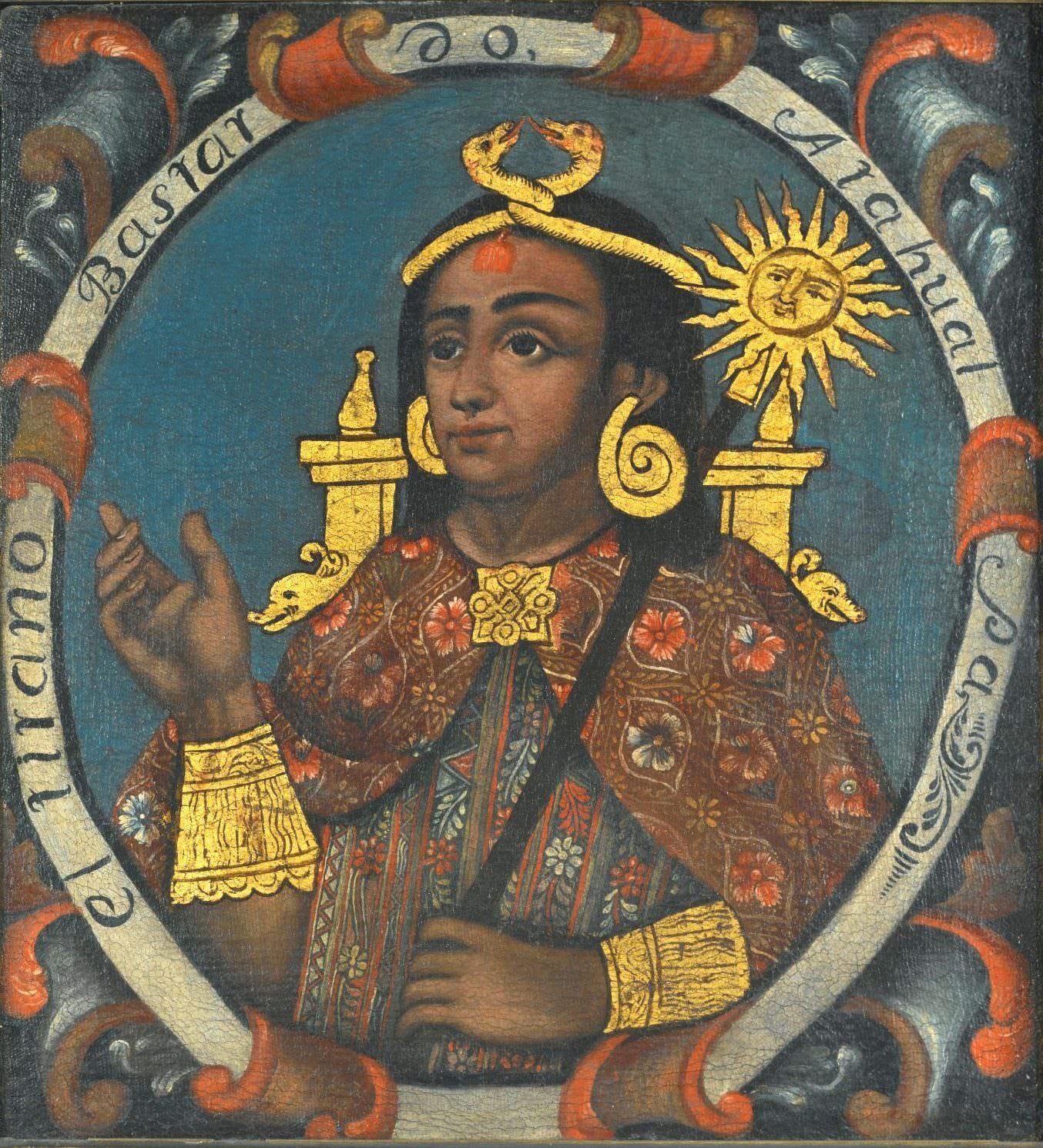
It’s true. Atahualpa, the last true Emperor of the Incas had been so, officially, for a month. The day the Spanish Conquistador, Francisco Pizarro and his minions found Atahualpa, he was en route to kill his brother Huáscar. An Inca war of succession was coming to a close, and it was the fittest who’d rule, at least theoretically. Some historians believe the Incas preferred a strongman ruler, one who’d behead a sibling for an empire.
Huáscar and Atahualpa were raised apart from each other, in very different Indigenous courts (one in current day Ecuador, the other in Peru). Both were groomed to rule the Empire once their father died. Together, they had over 250 half-siblings. But they were the ones prepped to fight each other to the death.
Atahulapa never actually ruled the whole of the 3,000 mile long Inca Empire. The Spaniards and their Indigenous anti-Inca allies stopped him before he ever had the chance.
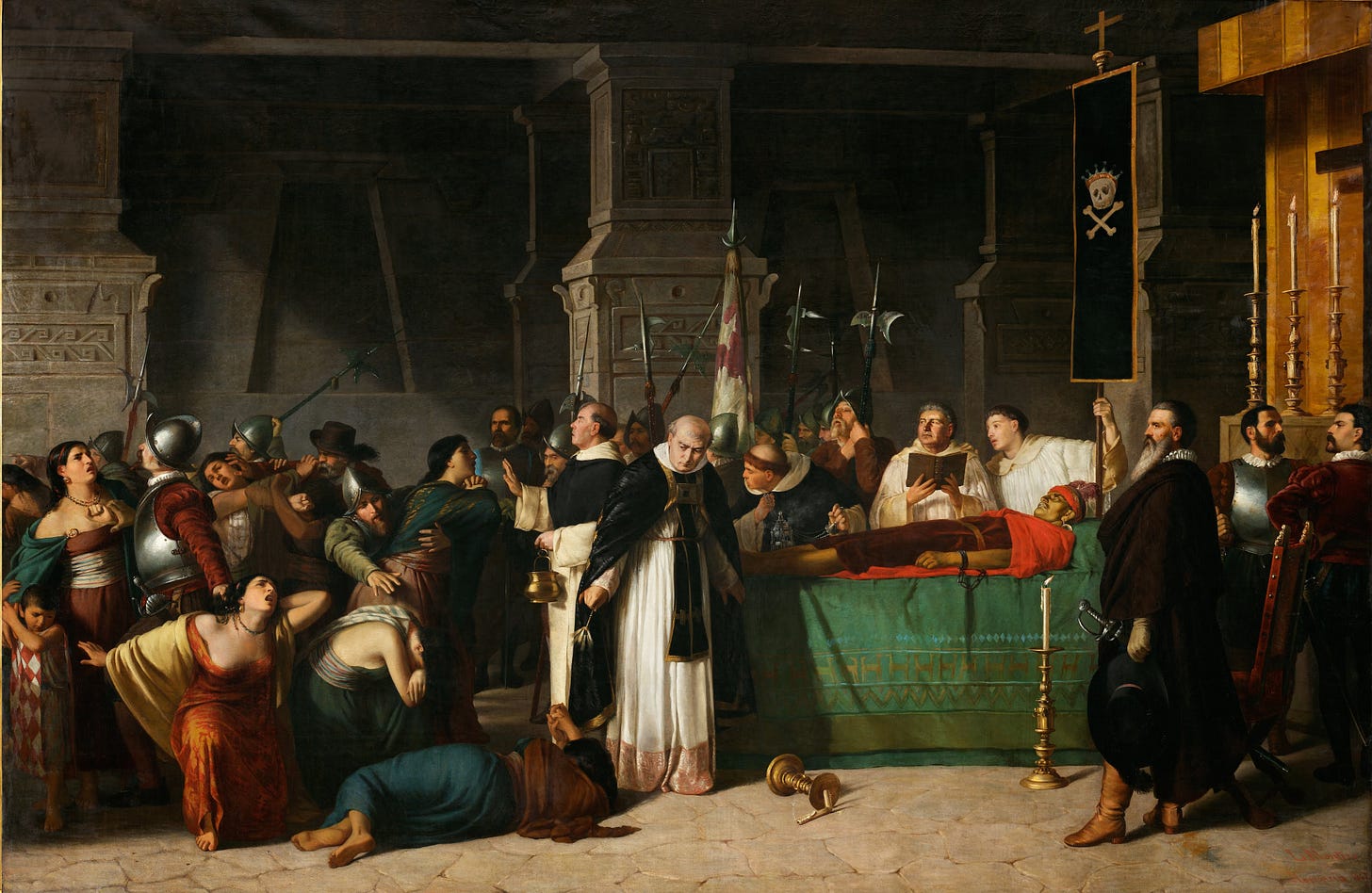
The point is, Huáscar and Atahualpa weren’t supposed to be friends. Instead, they were compelled to compete against each other for the highest of stakes—including life itself.6
When I brought my last child home for the first time, fifteen years ago, my other four kids had seen her once, through the shining plastic of an incubator. I didn’t buy them plush toys in her name. My hands were full with caretaking (my elderly Mami could no longer help) both at home and in the hospital. My daughter was born early and had spent months in a high-tech NICU.
Bringing her home, I was thrilled she’d finally live amongst family, en familia, surrounded by siblings (and cousins, too).
I’ll never forget how my sister (the same sis I’d welcomed by brother with, when we were kids in New Jersey) showed up for my kids and me the morning I brought my last baby home. My sis had set up a party, pink and cream balloons all around and a decadent home-baked cake—all to celebrate the newest addition to our family. My ñaña and her two children had hyped up my four older kids for this arrival. They all met us in the driveway as the new baby and I exited the minivan.
My sister was joyous and so were my niece, nephew, and four older kids. All of us a lovely brood.
Last night, rereading portions of Ars Vitae by Elisabeth Lasch-Quinn,7 I remembered my sister. Some of Lasch-Quinn’s lines are especially salient to me these days.
She writes,
The cruelty, crimes, and catastrophes of our times make it urgent and imperative, as it has always been, that those still here make the most of the gift of life, community, and our cultural riches, including our democratic polity.
The word family is way over-used in our culture. I’ve seen it used to describe tech start-ups, excluding religious communities, and sales forces. Still, it’s February in the world. Maybe let’s consider where we are, together, as humans. We are social animals, after all, and what keeps us alive and well is emotional and psychological warmth. This, not exclusively between romantic couples. It’s also for siblings, cousins, and friends (our chosen family). Today and always.
Quechua is an Indigenous language spoken in Ecuador, Peru, Bolivia, and Argentina. It’s the language of the Incas.
National Public Radio (NPR)
See “How do you get siblings to be nice to each other? These Latino families have an answer” by Michaeleen Doucleff (April 24, 2024) available here: https://www.npr.org/sections/goatsandsoda/2024/04/24/1246586836/brothers-sisters-close-siblings-caring-latino-culture
See Handbook of Happiness Research in Latin America, especially the chapter titled “Happiness, Research, and Latin America” by Mariano Rojas (Springer Nature, 2016)
See Campos B, Ullman JB, Aguilera A, Dunkel Schetter C. “Familism and psychological health: the intervening role of closeness and social support.” Cultur Divers Ethnic Minor Psychol. 2014;20(2):191-201. doi:10.1037/a0034094
Rowe, John H. “The Inca Civil War and the Establishment of Spanish Power in Peru.” Ñawpa Pacha: Journal of Andean Archaeology, no. 28 (2006): 1–9. http://www.jstor.org/stable/27977824.
See Ars Vitae: The Fate of Inwardness and the Return of the Ancient Arts of Living by Elisabeth Lasch-Quinn (University of Notre Dame Press, 2020)





